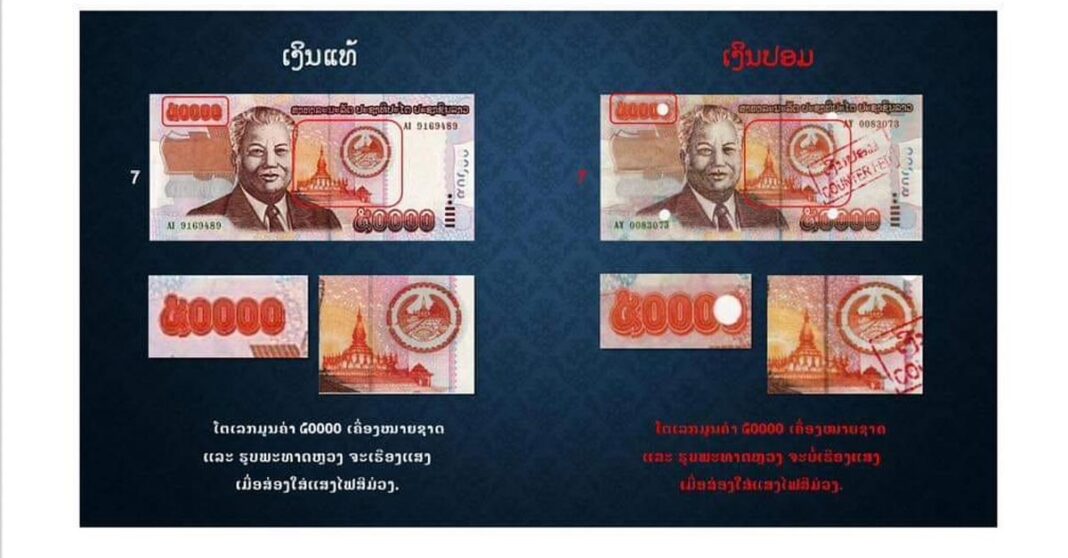The Bank of Laos has issued a public alert regarding the circulation of counterfeit currency, specifically targeting LAK 50,000 notes from 2004. This illicit activity has been observed predominantly in the northern region, with Bokeo province being notably affected.
Authorities have identified the counterfeit notes by their serial numbers, ranging from AZ 0218001 to AZ 0218999, the Bank of Laos reported in an official notice on 26 April. These fake bills are produced using sophisticated printing technology, closely mimicking the appearance of genuine banknotes. However, discrepancies between the fake and authentic notes have been identified by central authorities.
To mitigate the risk of unwittingly accepting counterfeit currency, individuals are urged to carefully scrutinize 2004 version LAK 50,000 notes, referring to guidelines provided by the central bank to distinguish genuine bills from forgeries.
In response to this threat, the Bank of Laos is working closely with law enforcement agencies to implement the safety measures outlined in national laws to combat counterfeit currency circulation.
Members of the public who encounter or possess information about the origin of counterfeit currency are encouraged to report it to the police or directly to the bank. Additionally, all parties are advised to exercise caution and remain vigilant when handling 2004 version LAK 50,000 currency notes.
Here are some differences between authentic and fake banknotes:

Authentic banknotes feature distinctive photosynthetic fibers, a security feature absent in counterfeit notes. Additionally, authentic notes display safety lines bearing the denomination “50,000” and “Bank of Lao PDR” in Lao script, whereas counterfeit notes lack visible numbers or letters.

Another hallmark of authentic notes is the clear and detailed shadow image of former Lao leader Kaisone Phomvihane, whereas counterfeit notes feature line images devoid of shadowing and resemblance. Furthermore, the lettering “50,000” on authentic notes is intricately detailed, contrasting with the less detailed lettering on fake notes.

Authentic notes also bear the number “50,000” (in Lao) partially displayed on both sides, aligning to form a complete number when combined. In contrast, counterfeit notes display the number partially on both sides but fail to arrange them to form “50,000” (in Lao).
Authentic notes feature soft and clear “50,000” numbers (in Lao) that can be distinctly felt when rubbed, whereas fake notes lack clarity and do not produce a tactile sensation when rubbed.

Under UV light, genuine notes exhibit a distinctive glistening effect on the numbers “50,000” (in Lao), the Lao national emblem, and the That Luang stupa. This effect is absent on counterfeit notes.



